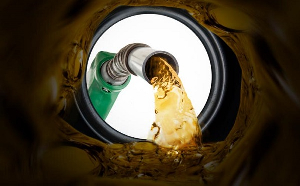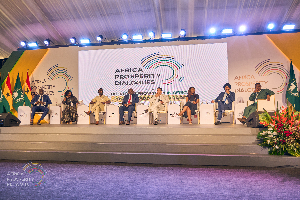Government has quickly changed gear to the highest speed by deploying about 10 platoons drawn from the army, navy, air force and the police to illegal mining sites to help protect the ecology from further degradation.
The operation, dubbed ‘Operation Halt 3’, would be the biggest joint military and police operation ever in the history of the country, following how the activities of illegal miners, known in the Ghanaian parlance as galamsey, have destroyed aquatic life with poisonous chemicals that are also injurious to humans.
The taskforce had completed a ten-day training at the Bundase Military Training Camp, Miotso, in the Ningo-Prampram District of the Greater Accra Region, and is expected to depart from Burma Camp to the various illegal galamsey sites in the country, after a short ceremony this morning.
The taskforce is to derive financial and logistical support from the Government of Ghana and donor agencies to sustain its operations.
The government needed to clamp down on the galamsey activities, after some small-scale miners issued threats of impeding the work of the anti-galamsey taskforce – ‘Operation Halt 3’.
The group had been asked to ‘lay down arms’ and rather cooperate with the force to achieve its objective.
The Managing Director of Graphic Communications Group and a known anti-galamsey campaigner, Ken Ashigbey, exclusively told The Chronicle that, rather than the threat issuers becoming an obstacle in the way of the taskforce, they should take advantage of an opportunity offered by the government to small-scale miners to undergo training programmes at the University of Mines and Technology, Tarkwa, on how to extract gold without the use of dangerous chemicals, which are injurious to human health.
The threat issuers, about a fortnight ago, said they were going back to the mining pits, in spite of the government’s ban.
The Minister for Lands and Natural Resources, John Peter Amewu, in a telephone conversation with The Chronicle, named another funding source, which, he said, the government would launch very soon.
He said that the highly-motivated force has a 12-month mandate to operate and bring sanity into the mining sector.
The Chronicle gathered that another contingent, which includes a Marine Unit, would be constituted and deployed across the country to protect water bodies.
In a related development, an independent inquisition The Chronicle undertook has revealed that the presence of sophisticated arms in galamsey enclaves cannot be underestimated. This is a result of the porous nature of Ghana’s borders, which enables elements fleeing conflict areas to easily enter the country with undeclared items.
A school of thought is of the belief that in order to retrieve these illegal weapons, amnesty, with attractive packages, should be offered to persons in possession of these guns.
Another suggestion is the use of the Arms and Ammunition section of the Criminal Investigations Department (CID) of the Ghana Police Service during the renewal of legitimately acquired arms that find their way to the galamsey sites.
In this wise, the police would refuse to renew the license and tactically withdraw these guns without any uproar.
The Ghana Water Company Limited (GWCL), in March this year, called on the government to clampdown on the activities of galamsey along the country’s water bodies.
According to the utility provider, the illegal miners have, over the years, impacted negatively on the GWCL’s ability to continually produce wholesome water for Ghanaian households, contributing to the intermittent water shortages in some parts of the country.
The situation, some experts, including the GWCL itself, have warned, if not checked, could lead to Ghana importing potable water soon, due to the environmental effects of galamsey activities.
As a result of the heavy pollution of rivers and water bodies through mining activities, the cost of water treatment by the GWCL has increased substantially.
Because of the high turbidity of the intake water due to pollution from galamsey activities, the GWCL is often compelled to do maintenance work more frequently.
The pollution of the intake water had led to frequent the breakdown of equipment and destruction of water pumps and filters.
It hinted that, with regards to production costs, it spent GH¢0.39 and GH¢0.2395 per cubic metres to treat some of its plants.
Some mining communities may not have been rolled over to boreholes yet, but the pollution of the intake water affects water supply to them, due to reduced down time.
Due to these galamsey activities, most farming communities in the eight regions, except the Greater Accra and Volta, have been forced to resort to the use of sachet water for daily household chores.
Some areas that have an alternative source of water, mechanised wells powered by electricity, are unreliable due to erratic power supply.
To this end, most Ghanaians want the government to intervene to save the situation by clamping down on galamsey activities
General News of Tuesday, 1 August 2017
Source: thechronicle.com.gh

















